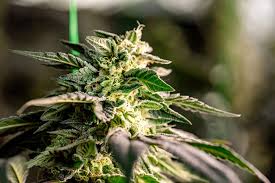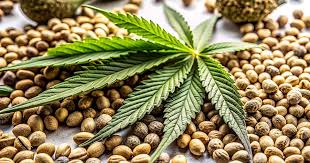
Understanding Weed Plant Seeds: Cultivation, Strains, and Best Practices
If you’re considering growing cannabis, one of the fundamental steps is choosing the right weed plant seeds. The type of seeds you select will impact your entire growing experience, from germination to harvest. Whether you’re a seasoned grower or a beginner, understanding the different types of seeds available and the best practices for cultivation is essential. To enhance your knowledge further, refer to this weed plant seeds https://kindseed.com/cannabis-seeds/ informative resource.
Types of Weed Plant Seeds
There are primarily three types of weed plant seeds: regular, feminized, and auto-flowering. Each type has its benefits and characteristics that cater to different growing needs.
Regular Seeds
Regular seeds are the most traditional form of cannabis seeds. They can produce both male and female plants. This trait is beneficial for breeders looking to create new strains, as males are necessary for pollination. However, for growers aiming solely for flower production, regular seeds can pose a challenge since male plants must be identified and removed to prevent pollination.
Feminized Seeds
Feminized seeds are genetically modified to produce only female plants. This trait is essential for growers focused on harvesting buds, as only female plants create the flowers sought after in cannabis cultivation. Due to the assurance of getting female plants, feminized seeds have gained immense popularity among home gardeners and commercial growers alike.
Auto-Flowering Seeds
Auto-flowering seeds are a hybrid of cannabis that switch from the vegetative stage to the flowering stage automatically, regardless of light cycles. This means they can be grown outdoors in various climates and will produce buds within a shorter timeframe. Auto-flowering varieties are perfect for growers looking for fast results, particularly in regions with shorter growing seasons.

Choosing the Right Seeds
Selecting the right seeds depends on several factors, including your growing environment, the strain you are interested in, and your overall cultivation goals. Here are some tips to help you make the best choice:
Consider Your Environment
Indoor versus outdoor growth can significantly influence your seed selection. Indoor growers usually have more control over environmental conditions, allowing them to thrive with various strains. In contrast, outdoor growers must consider their local climate and choose strains that are hearty and suited to their conditions.
Select Based on Desired Effects
The effects of cannabis vary significantly between strains. Some are uplifting and energizing, while others are calming or meditative. Consider what effects you desire and choose strains accordingly. Researching cannabinoid profiles and terpenes can provide insight into the potential effects of different strains.
Cultivation Practices
Cultivating cannabis successfully requires more than just seeds. Here are key practices to ensure a healthy grow:
Soil Quality and Nutrients
The foundation of healthy plants starts with quality soil. Cannabis thrives in nutrient-rich, well-draining soil. It’s essential to use organic fertilizers and amendments to provide your plants with the necessary nutrients without the risk of chemical buildup.

Watering Techniques
Watering is a critical aspect of growing cannabis. Over-watering can lead to root rot, while under-watering can stress the plant. A general rule of thumb is to let the soil dry out slightly between watering. Monitoring your plants closely will help you understand their specific water needs.
Light Requirements
Light plays a crucial role in the growth of cannabis plants. Depending on whether you are growing indoors or outdoors, the light requirements will vary. Indoor growers often use high-intensity discharge (HID) lamps, LED grow lights, or fluorescent lights. Outdoor growers should ensure their plants receive adequate sunlight exposure throughout the day.
Temperature and Humidity
The ideal temperature range for cannabis growth is between 70°F to 85°F (21°C to 29°C) during the day and slightly cooler at night. Humidity levels should also be monitored closely, especially during the flowering stage, to prevent mold and mildew. Aim for a humidity level of around 40-50% during flowering.
Harvesting and Curing
Knowing when to harvest is as critical as any other stage in cultivation. Pay attention to the trichomes on the buds; when they turn milky white and some begin to amber, it’s typically time to harvest. After harvesting, proper curing enhances flavor and potency. Store your buds in glass jars, opening them daily for fresh air to prevent mold while allowing the buds to cure correctly.
Staying Informed
As the cannabis industry continues to evolve, new strains and cultivation techniques are constantly being developed. Stay informed about the latest trends, advancements, and research in cannabis cultivation. Engaging in local growing communities or forums can provide valuable insights and support during your growing journey.
In conclusion, understanding weed plant seeds and their cultivation practices is vital for anyone interested in growing cannabis. Each seed type has unique characteristics; choosing the right one based on your goals and environment will set you on the path to a successful grow. Remember to focus on key cultivation practices such as soil quality, lighting, and humidity control, and you will be well on your way to enjoying your homegrown cannabis.
